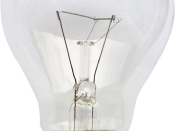THE PH VALUE & THE ELECTRICAL CONDUCTIVITY OF A SOLUTION
JOOYEON PARK
AIM
To know how to check the PH value of a solution and to see the relationship between the PH value and the electrical conductivity.
MATERIALS
Universal indicator, litmus, phenolphthalein, water, 6 beakers, wires, light bulbs, test tubes, metal conductors, solutions of: Ba(OH)2, NaOH, Na2CO3, CuSO4, H2SO4, CH3COOH, NH3*H2O
METHOD
Place a drop of each solution and water on universal indicators. Then use the color to find out the pH values of the solutions. After that, put a little amount of Ba(OH)2 and H2SO4 into different test tubes (two test tubes of Ba(OH)2 and two test tubes of H2SO4). Place drops of litmus to two test tubes (one test tube of Ba(OH)2 and another of H2SO4), and place drops of phenolphthalein (one test tube of Ba(OH)2 and another of H2SO4), and see the change of color of two different indicators in two different solutions.
Then pour CH3COOH and place couple drops of NaOH into a test tube and mix them. Check whether it resists the change of the pH values. Then pour pure water and the solutions of H2SO4, Ba(OH)2, CH3COOH, NH3*H2O into the beakers (each solution in a beaker). And place a metal conductor in the beakers with solutions and connect it to the wires that are connected to 5 different light bulbs. When connected, turn on the power and compare the brightness of the light bulbs connected to different solutions. Then try this again with the mixture of Ba(OH)2 and H2SO4.
ANALYSIS
For the values of pH, we got Ba(OH)2=13, NaOH=12, Na2CO3=12, CuSO4=3, H2SO4=1, CH3COOH=4, NH3*H2O=11 and pure water=7. The color of litmus changed to red when it met H2SO4 and changed to blue when it met Ba(OH)2. There was no color...


